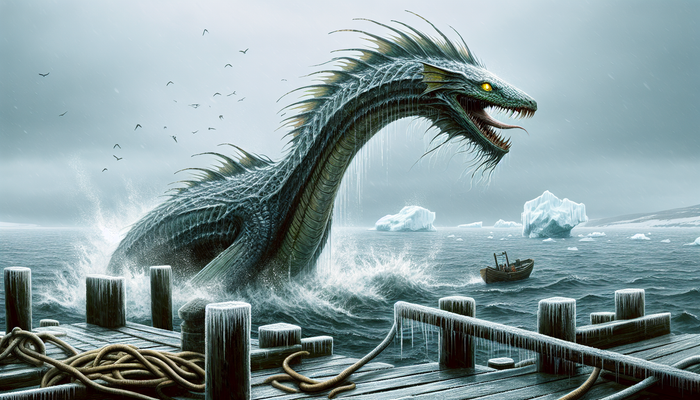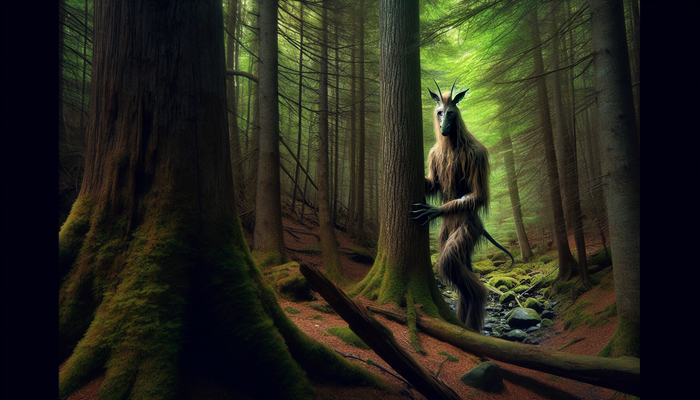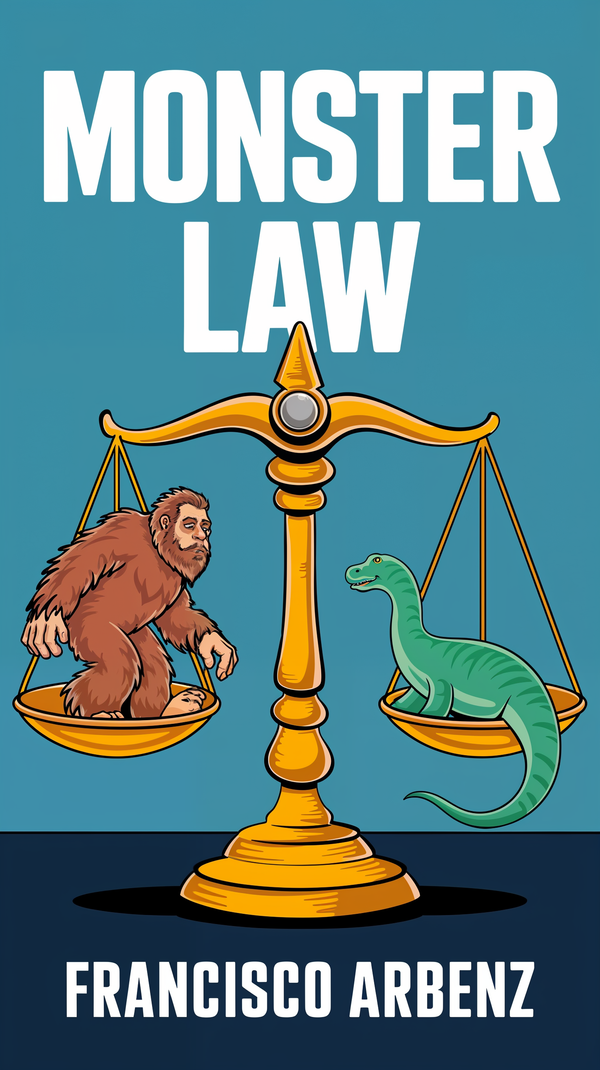The Morbach Monster: Germany's Enduring Werewolf Legend

By Ava Martinez, Cryptozoologist
In the darkest corners of our collective imagination, there lurk creatures that defy explanation - beings that straddle the line between man and beast, between the natural and the supernatural. Of all these entities, none have captured the human psyche quite like the werewolf. For centuries, tales of lycanthropes have stalked the pages of literature and haunted the shadows of our deepest fears. But sometimes, these legends take on a life of their own, rooting themselves in the very soil of our world. Such is the case with the Morbach Monster, a chilling tale that has left an indelible mark on the folklore of western Germany. This enduring legend stands out for its unique blend of historical intrigue, supernatural horror, and a tantalizing hint of truth that has allowed it to captivate generations. Join me as we delve into the dark heart of this fascinating story and explore the legacy of Germany's most infamous werewolf.
Origins of the Morbach Monster Legend
Our tale begins in the year 1812, in the quaint German town of Wittlich. Nestled in the picturesque Rhineland region, Wittlich seems an unlikely setting for a horror story. But it is here, locals will tell you in hushed tones, that Germany's last werewolf met its end. To understand the birth of the Morbach Monster legend, we must first set the stage. The year 1812 was a time of great upheaval in Europe. The Napoleonic Wars were raging, and the continent was awash in blood and chaos. In this atmosphere of uncertainty and violence, a French soldier named Thomas Johannes Baptist Schwytzer found himself fighting a losing battle. Schwytzer, a grizzled veteran of Napoleon's disastrous invasion of Russia, had seen his share of horrors. But nothing could have prepared him for the nightmare that awaited him in the forests of Germany.
Deserting his unit, Schwytzer banded together with a group of Russian turncoats who shared his desire to escape the war and return home. As they made their way west towards Schwytzer's native Alsace, the desperate men found themselves in the countryside near Wittlich. It was here, at a secluded farmhouse, that Schwytzer's fate would take a diabolical turn. Driven by hunger and desperation, the deserters decided to raid the farm for supplies. But their plan went horribly awry when the farmer and his sons stumbled upon the scene. In a fit of panic and rage, Schwytzer and his cohorts brutally murdered the men, their screams shattering the tranquil night.
Unbeknownst to the deserters, the farmer's wife bore witness to the slaughter. As she watched her husband and children being cut down, an unholy fury consumed her. With her last breath, she cursed Schwytzer, her words seething with an ancient, primal power: "From now on at each full moon you will change into a rabid wolf!" Enraged by the woman's defiance, Schwytzer silenced her with a savage blow, crushing her skull like an eggshell. But it was too late. The deed was done, the curse uttered. As the deserters fled into the night, a diabolical transformation began to take hold of Schwytzer, twisting his body and soul into something monstrous.
The Monstrous Transformation of Thomas Schwytzer
In the weeks and months that followed, Thomas Schwytzer underwent a terrifying metamorphosis. The once-human soldier found himself consumed by an insatiable bloodlust, a hunger that could only be sated through acts of unspeakable violence. Schwytzer's descent into depravity was as swift as it was complete. No longer content with mere banditry, he developed a taste for the most heinous crimes imaginable. Rape, murder, even cannibalism - nothing was too vile for the beast that now lurked behind Schwytzer's eyes.
As Schwytzer's atrocities escalated, whispers began to spread throughout the Rhineland of a creature that defied explanation. Eyewitnesses spoke of a wolf-like entity that walked upright like a man, appearing under the light of the full moon to wreak havoc on the countryside. Livestock were found torn asunder, their flesh rent by vicious claws and fangs. Men and women alike were butchered in the night, their mutilated corpses discovered in the morning light, faces frozen in masks of terror.
One of the most chilling accounts of Schwytzer's reign of terror comes from a young woman named Elizabeth Beierle. A farmer's daughter known for her beauty and kind heart, Elizabeth's life would be forever shattered by her encounter with the beast. One fateful evening, as she walked home through the woods, Elizabeth found herself face to face with an enormous, snarling creature - a twisted amalgamation of man and wolf. Before she could flee, the beast was upon her, its hot breath reeking of blood and decay.
What followed was an act of pure, unadulterated evil. The werewolf that had once been Thomas Schwytzer forced himself upon Elizabeth, ravaging her body and soul with a savagery that defied comprehension. When the beast was finished, it vanished back into the forest, leaving Elizabeth broken and bleeding on the cold ground. But even more horrific than the physical trauma was the knowledge that now grew inside her - the seed of the monster that had defiled her.
The Morbach Monster's Reign of Terror
As the atrocities mounted, the people of the Rhineland found themselves gripped by a terror unlike any they had ever known. It seemed that no one was safe from the depredations of the creature that stalked the night. Desperate for an end to the nightmare, the local villagers banded together, determined to hunt down and destroy the beast once and for all.
Armed with torches, pitchforks, and an unshakable resolve, the mob tracked the werewolf to its lair deep in the forest near the village of Morbach. There, in a clearing stained with the blood of countless victims, they confronted the monster that had brought such misery to their lives. A fierce battle ensued, the creature fighting with the fury of a cornered animal. But in the end, the villagers emerged victorious. With silver and fire, they brought the beast to its knees, ending the reign of terror that had gripped the land.
But even in death, the Morbach Monster would not release its hold on the people of the Rhineland. Fearing that the creature's evil might somehow survive, the villagers took drastic measures to ensure that it would never rise again. They buried the werewolf's corpse at a desolate crossroads, driving a stake through its heart and decapitating the body for good measure. Over the grave, they erected a small shrine, a stone monument adorned with the image of the Virgin Mary. At the base of the shrine, they lit a candle - an eternal flame that would stand vigil over the monster's remains, guarding against its return.
For generations, the people of Morbach tended the flame, passing down the grim duty from father to son, mother to daughter. They whispered of the curse that lay upon the town, the dark legacy of Thomas Schwytzer and his unholy transformation. And as the years turned to decades, and the decades to centuries, the legend of the Morbach Monster only grew - a chilling reminder of the evil that men could do, and the price that must be paid for succumbing to the beast within.
Unique Elements of the Morbach Monster Legend
The tale of the Morbach Monster, while sharing many tropes and motifs with other werewolf legends, stands out for several unique elements that have contributed to its enduring power and fascination. Perhaps most striking is the specificity of the monster's transformation. In a departure from many traditional European werewolf tales, which depict lycanthropes as shifting form at will, the Morbach Monster is explicitly linked to the cycles of the moon. Schwytzer's curse, uttered with the dying breath of his final victim, specifies that his transformation will occur "at each full moon" - a detail that would later become a staple of Hollywood werewolf lore, but was far less common in older folklore.
Another curious aspect of the Morbach Monster legend is the fate of Schwytzer's offspring. When Elizabeth Beierle gave birth to a son nine months after her horrific encounter with the beast, many feared that the child would be cursed, doomed to follow in his father's footsteps as a ravening monster. But as the boy grew to manhood, it became clear that he had been spared his sire's fate. Martin, as the child was named, showed no signs of lycanthropy, no hint of the evil that had consumed Schwytzer. Instead, he lived a quiet, unremarkable life, fathering children of his own and founding a lineage that would become one of Morbach's most respected families.
This generational aspect of the Morbach Monster story sets it apart from many other werewolf tales, which often depict lycanthropy as a hereditary affliction, passed down from parent to child like some dark genetic curse. The idea that Schwytzer's bloodline could escape the taint of his crimes adds an intriguing wrinkle to the narrative, hinting at the possibility of redemption and the enduring power of the human spirit.
Of course, the most compelling aspect of the Morbach Monster legend is the tantalizing possibility that it might be based, at least in part, on actual historical events. While the supernatural elements of the tale are clearly the stuff of folklore, some researchers have suggested that Thomas Schwytzer himself may have been a real person - a French soldier turned brigand whose crimes were so heinous that they transformed him, in the eyes of the locals, into a literal monster.
The idea is not as far-fetched as it might seem at first glance. The chaos and upheaval of the Napoleonic Wars created a perfect breeding ground for outlaws and deserters, men who had been brutalized by combat and were willing to do whatever it took to survive. In such an environment, it's not hard to imagine a figure like Schwytzer emerging - a man so consumed by violence and depravity that he seemed to have lost all trace of his humanity.
Whether the Morbach Monster was a real flesh-and-blood killer or a purely fictional creation, there is no denying the power of the legend that grew up around him. For centuries, the story of Schwytzer's curse has endured, passed down from generation to generation as a warning against the dangers of unchecked evil and the beast that lurks within the human heart.
The Chilling Modern Twist
For all its enduring power, the legend of the Morbach Monster might have remained little more than a footnote in the annals of German folklore were it not for a chilling incident that occurred in the late 20th century. In 1988, nearly two centuries after Schwytzer's alleged rampage, a series of strange events unfolded at a U.S. Air Force base near the town of Morbach, events that would breathe new life into the old werewolf tale and send shivers down the spines of even the most skeptical observers.
It began, as so many strange tales do, with a seemingly innocuous occurrence. A group of Air Force personnel, returning to base after a night of revelry, found themselves passing by the old werewolf shrine on the outskirts of town. As they approached the stone monument, they noticed something odd: the eternal flame, which had burned steadily for generations, had gone out. The airmen, young and irreverent, saw an opportunity for a bit of macabre humor. They joked about the old legend, daring each other to approach the darkened shrine and tempt the wrath of the beast. But in the end, they thought better of it and continued on their way, leaving the candle cold and lifeless.
They couldn't have known the horror that would follow.
That very night, as the base slept, all hell broke loose. Alarms blared, sirens wailed, and soldiers scrambled to their posts as something breached the perimeter defenses. Guards reported a massive, shadowy figure loping through the darkness, its eyes glinting with an eerie, otherworldly light. Those who caught a glimpse of the creature swore it was no ordinary animal. It moved with a fluid, almost human grace, its form shifting and blurring as if it were not entirely of this world.
The base's security forces mobilized immediately, deploying teams to track down and neutralize the intruder. But the creature proved elusive, evading patrols with uncanny skill and seeming to vanish into thin air whenever it was cornered. As the night wore on and the body count began to rise, a chilling realization dawned on the soldiers: they were dealing with something far beyond their understanding, something that defied all rational explanation.
In the end, it was pure chance that brought the nightmare to a close. A young airman, separated from his unit and hopelessly lost in the darkness, stumbled upon the creature as it crouched over the ravaged body of one of its victims. In a moment of blind panic, the soldier emptied his weapon into the beast, the bullets tearing through its flesh and sending it reeling back into the shadows.
When reinforcements arrived on the scene, they found no sign of the creature save for a trail of blood that led off into the forest. But there, at the edge of the treeline, they made a discovery that would haunt them for the rest of their lives. Lying in a pool of its own gore was a human corpse - or what was left of one. The body had been savaged almost beyond recognition, its limbs twisted at impossible angles and its flesh torn asunder by massive claws. Only the tattered remains of a Luftwaffe uniform, still clinging to the ruined form, hinted at the victim's identity.
In the days that followed, as the base struggled to come to terms with the horror it had witnessed, whispers began to circulate of an old evil reawakened, of a curse that had lain dormant for centuries only to be unleashed once more upon an unsuspecting world. Some spoke of Thomas Schwytzer, the long-dead French soldier whose atrocities had given rise to the legend of the Morbach Monster. Others pointed to the extinguished flame at the werewolf shrine, seeing in it an omen of the carnage to come.
Officially, the incident was chalked up to a wild animal attack, a tragic but ultimately mundane occurrence. But those who were there that night, those who looked into the eyes of the beast and saw the malevolence that lurked within, knew better. They knew that they had brushed up against something ancient and evil, something that defied all attempts at rational explanation.
And so the legend of the Morbach Monster was reborn, given new life by the chilling events of that fateful night in 1988. The eternal flame at the werewolf shrine was rekindled, its light once more standing vigil against the darkness that threatened to engulf the land. But for those who bore witness to the horror, the memory of what they had seen would never fade. They would carry it with them always, a grim reminder of the evil that men could do - and the price that must be paid for unleashing the beast within.
The Enduring Legacy of the Morbach Monster
In the years since the chilling events of 1988, the legend of the Morbach Monster has only grown in power and resonance. The tale of Thomas Schwytzer and his unholy transformation has become a fixture of German folklore, a dark thread woven into the tapestry of the nation's cultural heritage.
At the heart of this enduring fascination lies the werewolf shrine itself, that lonely stone monument that stands as a silent sentinel against the evil that once stalked the land. For generations, the people of Morbach have tended the eternal flame that burns at the base of the shrine, a sacred duty passed down from father to son, mother to daughter. The candle, which flickered out so ominously on that fateful night in 1988, has remained lit ever since - a symbol of the community's determination to keep the darkness at bay.
But the Morbach Monster is more than just a local legend. In recent years, the tale has begun to capture the imagination of people far beyond the borders of the Rhineland.



























